
The Yusufzai or Yousafzai, also referred to as the Esapzai, or Yusufzai Afghans historically, are one of the largest tribes of Pashtuns. They are natively based in the northern part of Khyber Pakhtunkhwa, to which they migrated from Kabul during the 16th century, but they are also present in parts of Afghanistan, including Kunar, Kabul, Kandahar and Farah. Outside of these countries, they can be found in Ghoriwala District Bannu, Balochistan Sibi (Akazai), Chagai (Hassanzai) and Rohilkandh.

Shangla District is a district in Malakand Division of Khyber Pakhtunkhwa, Pakistan. The district's headquarters are located at Alpuri, while the largest city and commercial center is Besham. The district was established in 1995, having previously been a subdivision of Swat District. The total area of the district is 1,586 square kilometers. Shangla comprises three subdivisions, Alpuri, Puran, Chakesar, Martung and Besham tehsils. Shangla is famous for its touring spot, Yakhtangay

The Gandapur also called Gandapore is a Pashtun tribe, which is based in Pakistan and Afghanistan. They took their name from the Indo-Parthians king Gondophernes of house of Suren.
Awan is a tribe and surname centred in the Northern Pakistan and Punjab region of Pakistan. Awans are predominantly present in the northern, central, and western parts of Punjab, with significant population also present in Khyber Pakhtunkhwa, Azad Kashmir, and to a lesser extent, in Sindh and Balochistan. The tribe claim Arab, particularly Alid, origin through its primary ancestor Qutub Shah, who came to modern-day Pakistan with Mahmud of Ghazni.

Najib ad-Dawlah, also known as Najib Khan Yousafzai, was a Rohilla Yousafzai Afghan who earlier served as a Mughal serviceman but later deserted the cause of the Mughals and joined Ahmad Shah Abdali in 1757 in his attack on Delhi. He was also a House Chief of Rohilkhand, and in the 1740s founded the city of Najibabad in Bijnor, India. He was instrumental in winning the Third Battle of Panipat.
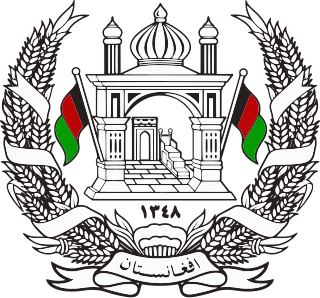
The Barakzai dynasty, also known as the Muhammadzai dynasty, ruled what is now Afghanistan from 1823 to 1978, when the monarchy ended de jure under Musahiban Mohammad Zahir Shah and de facto under his cousin Sardar Mohammad Daoud Khan. The Barakzai dynasty was established by Dost Mohammad Khan after the Durrani dynasty of Ahmad Shah Durrani was removed from power. As the Pahlavi era in Iran, the Muhammadzai era was known for its progressivist modernity, practice of Sufism, peaceful security and neutrality, in which Afghanistan was referred to as the "Switzerland of Asia".

The Mangal are a tribe of the Afghan or Pashtun people residing in eastern Paktia and adjacent Khost provinces of Afghanistan, and in the town of Tari Mangal, district Kurram, Pirdil Khel, Fatima Khel and Surrani of Bannu Pakistan. Their land constitutes the northeastern part of the Loya Paktia region. The Mangals descend from Karlani Pashtun lineage.

Martung, Mārtung or Martoong is a highland village and tehsil of Shangla District, Khyber Pakhtunkhwa, Pakistan included in Puran Subdivision. Central Martung (Koozkalai) is 982 m above sea level., Being hilly area, some parts of Martung are even more than 1800 m above mean sea level. Alogai is a place with scattered population in Martung having an altitude of 1641 meters. Martung is a green valley situated in the south-east of Shangla District, about 5 km north-west from River Indus. Major villages of the sub tehsil include Kabalgram, Pishlor, Titwalan, Koozkalai, Manzkalai, Shaga and Karindara.
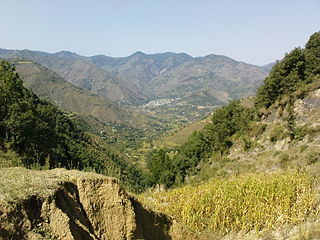
Chakesar is a town and tehsil of the Shangla District in Khyber-Pakhtunkhwa province of Pakistan. It is situated about 6 km in the north-west on the right bank of the Indus River. Chakesar was given the status of Tehsil in 2017. The inhabitants live primarily on agricultural products.
Beka is a town and Union Council of Swabi District in the Khyber Pakhtunkhwa of Pakistan. It is part of Lahor Tehsil.
Zarobai Munara, commonly known as Zarobi, is a historical village and Union Council of Swabi District in the Khyber Pakhtunkhwa province of Pakistan. It is located at 34°2′0N 72°34′0E with an altitude of 321 metres.
Dandoqa is a village in Swabi District of Khyber-Pakhtunkhwa, Pakistan. It is located at 34°10'50N 72°18'56E with an altitude of 319 metres (1049 feet). It is surrounded by the villages of Tarakai, Yarhussain, Dagi and Sikandari on its north, west, east south respectively. Its population is 4000 to 7000 (2007). The entire village mostly has an arid climate with minimum rainfall. The land is mostly of agricultural use and the population is multi-racial.
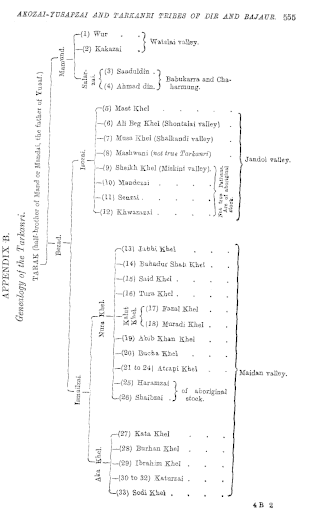
The Kakazai, also known as Loi, Loe, or Loye Mamund, a division of the Mamund clan, are a Pashtun tribe part of the larger Tarkani tribe who are primarily settled in Bajaur Agency, Pakistan, but originally hailed from the Laghman province of Afghanistan. However, it has grown and scattered around to such an extent that it is recognized as tribe of its own.
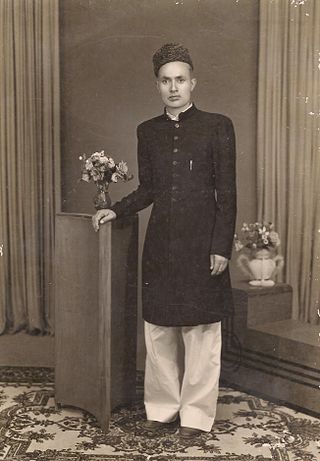
Khan Roshan Khan Yousafzai was a Pashtun historian, educationalist, and writer from Pakistan known primarily for being president of the Muslim League in Swabi and for writing books on the history of the Pashtun people.

Bārakzai is the name of a Pashtun tribe from present-day Kandahar, Afghanistan. '"Barakzai" is a common name among the Pashtuns and it means "son of Barak" in Pashto. According to the Encyclopædia Iranica, "In the detailed Pashtun genealogies there are no fewer than seven instances of the ethnic name Bārakzī, at very different levels of tribal segmentation. Six of them designate simple lineages within six different tribes located in the Solaymān mountains or adjacent lands... The seventh instance, on the other hand, designates one of the most important Pashtun tribes in numbers and historic role, part of the Zīrak branch of the Dorrānay confederation.
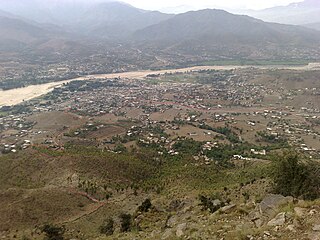
Dara Utmankhel, also known as Shaikhan, is a valley in the Lower Dir District of Khyber Pakhtunkhwa, Pakistan. It consists of nine villages: Maniband ما نی بند, Jabaghi جبګۍ, Zara Doghy زړه ډوګۍ, Kot Koshah کوټ کو شاه, Mandal Korona کورونه ماندل, Kot کوټ, Ghwandy غونډئ, Fazal Abad and Shah Kuronu شاه کو رونه. It lies in Timergara tehsil, east of the main road from Timergara to Dir. The inhabitants of this area belong to the Mandal, a clan of Utmankhel tribe of Pashtuns. The Utmankhel is one of the Karlanri Pashtun or Afghan tribes who appeared in concert with other tribes like Yousafzai and Tarkalani. They first settled in the areas of Malakand, Bajaur and Mohmand. These people were mainly associated with trade as the land was not suitable for agriculture.
The Muhammadzai are a Pashtun tribe residing in Charsadda, Pakistan.
Gulakai Kot (ګوړاکای کلى یا شیرکل کوټ) is a remote village in Afghanistan. It is located at the district of Shwak, in the eastern province of Paktia. It belongs to Shabak Khel tribe, one of the five major Zadran tribes.
Gunyar or Gul-e-Anaar is a village near Thana, Malakand district, Pakistan. The residents of the village consist mostly of Madey-Khel Miagaan. The nearby villages of Gunyar are Thana, Chapai, Maizara, Aladhand Dherai and Nalu. Most of the people of this village also live in Karachi, U.A.E, Saudi Arabia, Qatar and England.











